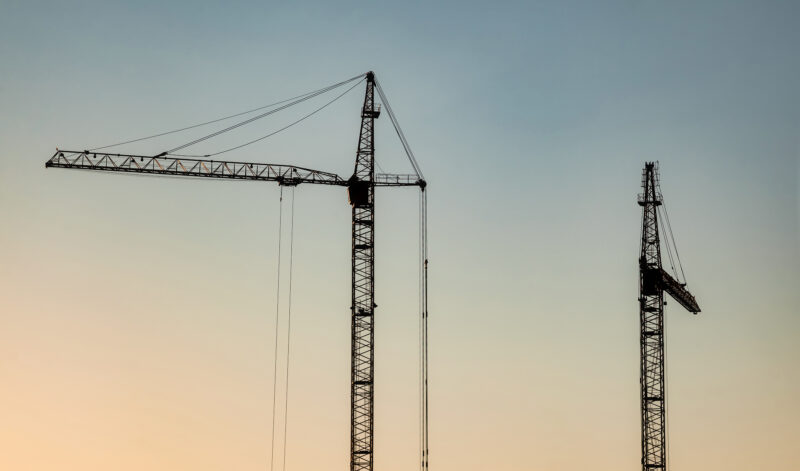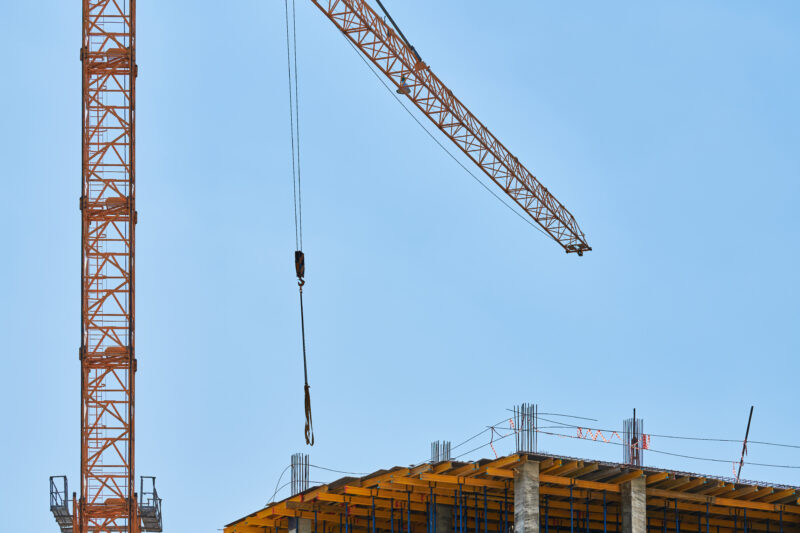Understanding Crane Wind Speed Limits for All Types of Cranes

Cranes are essential to modern construction and heavy lifting, but they are highly sensitive to wind conditions. Understanding the crane wind speed limit is vital for ensuring safety, preventing accidents, and maintaining operational efficiency. Whether operating a mobile crane, tower crane, or a floating marine crane, wind management should be a top priority. This guide provides an in-depth look at how wind affects crane operations, outlines crane-specific wind speed thresholds, and offers best safety practices to manage these risks effectively.
Introduction: The Risk Wind Poses to Crane Operations
Operating cranes in windy conditions presents a significant risk to both equipment and personnel. Wind exerts dynamic pressure on a crane’s structure and its suspended load, directly impacting balance, stability, and lifting capacity. As wind speeds rise, the surface area of the load and the boom acts like a sail, magnifying the crane’s vulnerability to tipping, load drift, and even catastrophic failure. Even a relatively small gust can create dangerous oscillations, leading to loss of load control or structural stress beyond design limits.
The hazards are not limited to load sway alone. High winds can destabilize the entire crane setup, especially when operating at extended boom lengths or greater heights where wind intensity naturally increases. Structural failure of components like booms or cables is also a real threat if operations continue beyond safe wind speed thresholds.
Understanding and respecting crane wind speed limits is critical for safe operations. Each crane type—whether mobile, tower, crawler, or floating—has defined limits based on its design and the environment it operates in. Incorporating proper wind monitoring tools and proactive planning ensures crane stability, operator safety, and project continuity even under challenging weather conditions.
General Wind Speed Guidelines for Crane Use
When operating cranes, general wind speed guidelines provide an essential first checkpoint:
- 0–12 mph (0–19 kph / 0–5.4 m/s): Operations are generally safe under normal lifting conditions.
- 13–31 mph (20–50 kph / 5.8–13.9 m/s): Exercise caution. Evaluate load weight, surface area, and boom height. Adjust operational plans accordingly.
- 32+ mph (51+ kph / 14.3+ m/s): Stop all lifting operations immediately. Wind speeds at this level pose a serious risk of load swing, tip-over, and structural damage.
It’s important to always consult manufacturer guidelines and site-specific procedures in addition to these general rules, as factors like load dimensions and lift height can demand stricter thresholds.
Key Factors That Affect Wind Speed Limits
Several critical factors determine how wind impacts crane safety:
Load Surface Area
The larger and flatter the surface area of a load, the greater the wind resistance. Even moderate winds can cause high drag forces, dramatically increasing the load’s tendency to sway or rotate.
Lift Height
Wind speeds increase significantly with altitude. A crane operating at 100 feet will encounter stronger winds than one working closer to the ground. As lift height increases, so does the need for conservative wind speed thresholds.
Crane Type and Configuration
Different cranes react differently to wind. Tower cranes and luffing jib cranes have tall, slender structures prone to bending moments. Mobile cranes, depending on boom extension and counterweight setup, have specific limits that may be lower. Longer booms and higher extensions demand stricter wind monitoring.
Site-Specific Conditions
Urban environments, valleys, and coastal areas can create unpredictable wind patterns. Buildings, cliffs, and other structures can form ‘wind tunnels,’ accelerating wind speed locally. It’s essential to use localized wind monitoring rather than relying solely on general weather reports.
By analyzing these factors before every lift and continuously during operations, crane crews can ensure they stay within safe operating conditions.
Crane-Specific Wind Speed Limits

Each crane type has its own wind speed tolerances. Understanding these limits is critical:
Tower Cranes
Operations must cease if wind speeds exceed 38–45 mph (61–72 kph). When idle, tower cranes must be allowed to ‘weather vane’—rotate freely with the wind—to avoid stress buildup.
Mobile Cranes
Generally, lifting should stop at wind speeds above 22 mph (35 kph), though lower thresholds may apply depending on boom length and load surface.
Crawler Cranes
Despite a stable base, crawler cranes should limit operations when winds reach around 26.8 mph (43 kph). Their large surface area makes them sensitive to gusts.
Overhead and Gantry Cranes
For indoor overhead cranes, wind is typically not a concern. For outdoor gantry cranes, follow site-specific guidelines—most operations cease around 20–25 mph (32–40 kph).
Floating/Marine Cranes
Operating on water presents additional instability. Crane operations often halt when wind speeds exceed 20 mph (32 kph), especially in rough seas.
Telescopic Boom Cranes
Highly susceptible to wind, telescopic cranes should stop lifting at 20–25 mph (32–40 kph) depending on boom extension.
Luffing Jib Cranes
Similar to tower cranes, operations cease at about 38 mph (61 kph). Stability protocols like weather-vaning are critical when not in use.
Self-Erecting Cranes
Smaller and lighter, these cranes are vulnerable and should be secured or lowered at around 25 mph (40 kph).
Best Practices for Crane Safety in Windy Conditions
Pre-Lift Planning
Before any lift, teams must check both short-term and long-term weather forecasts. Plan lifts during calmer periods and prepare contingency plans for escalating winds.
Real-Time Monitoring
Equip sites with dedicated anemometers to track live wind data at crane height. Scarlet Tech’s Wireless Anemometer offers reliable, real-time readings critical for timely decision-making.
Crew Communication
Clear communication is essential during windy operations. Teams should follow standard wind alert protocols, with all crew trained to recognize unsafe conditions. Scarlet’s Wireless Anemometer improves coordination by delivering real-time wind data and audiovisual alerts to all personnel. This enables faster, safer decisions when wind speeds rise.
Decision Authority
Operators must have full authority to halt operations if they feel wind conditions are unsafe—without fear of repercussion. Empowering operators ensures faster responses to sudden weather changes.
By embedding these practices into daily routines, construction teams can vastly improve safety outcomes on site.
Crane safety in windy conditions is not only best practice—it’s an OSHA mandate. For more detailed guidance, review OSHA’s Crane Safety Requirements.
